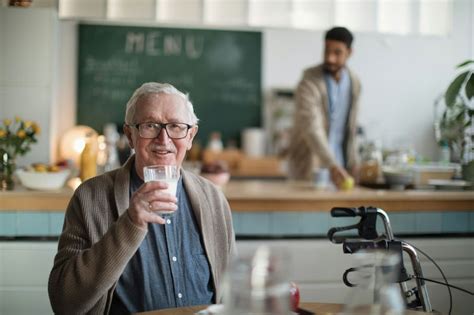Maintaining strong bones is essential for overall health, especially as we age. However, with the increasing prevalence of osteoporosis and other bone-related disorders, it's clear that traditional methods alone may not be enough. This is where technology comes in – innovative tools and techniques that can help boost bone density and promote healthier bones. In this article, we'll explore 7 ways to boost bone density with tech.
Understanding Bone Density
Before we dive into the tech solutions, it's essential to understand bone density. Bone density refers to the measure of bone strength and mass, which can be affected by various factors, including age, genetics, and lifestyle. Low bone density can lead to osteoporosis, a condition characterized by brittle and porous bones.
1. Wearable Devices for Monitoring Bone Health
Wearable devices, such as smartwatches and fitness trackers, can help monitor bone health by tracking physical activity, sleep patterns, and nutrition. Some devices can even detect falls, which can be a significant risk factor for osteoporosis. By monitoring these factors, individuals can make informed decisions about their lifestyle and take proactive steps to improve bone health.Examples of Wearable Devices for Bone Health
Some examples of wearable devices that can help monitor bone health include:- Apple Watch: Tracks physical activity, sleep patterns, and nutrition
- Fitbit: Monitors physical activity, sleep patterns, and nutrition
- Garmin: Tracks physical activity, sleep patterns, and nutrition, with additional features such as fall detection

2. Virtual Reality (VR) for Exercise and Rehabilitation
Virtual reality (VR) technology can be used to create immersive exercise and rehabilitation programs that promote bone health. VR can help individuals engage in physical activity that they may not have been able to participate in otherwise, such as those with mobility issues or chronic pain.Examples of VR for Exercise and Rehabilitation
Some examples of VR for exercise and rehabilitation include:- VR Fitness: A VR platform that offers various exercise programs, including strength training and cardio workouts
- PhysioVR: A VR platform that provides physical therapy exercises and rehabilitation programs

3. 3D Printing for Customized Orthotics and Prosthetics
3D printing technology can be used to create customized orthotics and prosthetics that help improve bone health. Customized orthotics and prosthetics can provide better support and alignment, reducing the risk of injury and promoting bone growth.Examples of 3D Printing for Customized Orthotics and Prosthetics
Some examples of 3D printing for customized orthotics and prosthetics include:- Össur: A company that offers 3D printed prosthetics and orthotics
- Hocoma: A company that provides 3D printed orthotics and prosthetics for rehabilitation

4. Artificial Intelligence (AI) for Personalized Nutrition and Lifestyle Recommendations
Artificial intelligence (AI) can be used to provide personalized nutrition and lifestyle recommendations that promote bone health. AI algorithms can analyze individual data, such as genetic information, medical history, and lifestyle habits, to provide tailored recommendations.Examples of AI for Personalized Nutrition and Lifestyle Recommendations
Some examples of AI for personalized nutrition and lifestyle recommendations include:- Habit: A personalized nutrition and wellness platform that uses AI to provide tailored recommendations
- Nutrino: A personalized nutrition platform that uses AI to provide tailored recommendations

5. Biofeedback and Neurofeedback for Stress Reduction
Biofeedback and neurofeedback technologies can help reduce stress, which is a significant risk factor for osteoporosis. By providing individuals with real-time feedback on their physiological responses, biofeedback and neurofeedback can help individuals manage stress and promote bone health.Examples of Biofeedback and Neurofeedback for Stress Reduction
Some examples of biofeedback and neurofeedback for stress reduction include:- HeartMath: A biofeedback platform that provides real-time feedback on heart rate variability
- Peak: A neurofeedback platform that provides real-time feedback on brain activity

6. Mobile Apps for Tracking and Managing Bone Health
Mobile apps can help individuals track and manage their bone health by providing tools for monitoring nutrition, exercise, and sleep patterns. Mobile apps can also provide educational resources and personalized recommendations for promoting bone health.Examples of Mobile Apps for Tracking and Managing Bone Health
Some examples of mobile apps for tracking and managing bone health include:- Bone App: A mobile app that provides tools for tracking nutrition, exercise, and sleep patterns
- Osteoporosis Tracker: A mobile app that provides tools for tracking bone density and osteoporosis risk

7. Telemedicine for Remote Consultations and Monitoring
Telemedicine platforms can provide remote consultations and monitoring, making it easier for individuals to access healthcare services and manage their bone health. Telemedicine can also reduce the risk of hospitalization and improve health outcomes.Examples of Telemedicine for Remote Consultations and Monitoring
Some examples of telemedicine for remote consultations and monitoring include:- Teladoc: A telemedicine platform that provides remote consultations and monitoring
- American Well: A telemedicine platform that provides remote consultations and monitoring

Gallery of Bone Health Technology






What is bone density?
+Bone density refers to the measure of bone strength and mass, which can be affected by various factors, including age, genetics, and lifestyle.
How can technology help with bone health?
+Technology can help with bone health by providing tools for monitoring nutrition, exercise, and sleep patterns, as well as providing personalized recommendations for promoting bone health.
What are some examples of technology that can help with bone health?
+Some examples of technology that can help with bone health include wearable devices, virtual reality, 3D printing, artificial intelligence, biofeedback and neurofeedback, mobile apps, and telemedicine.
By leveraging these 7 ways to boost bone density with tech, individuals can take proactive steps to promote bone health and reduce the risk of osteoporosis. Whether it's through wearable devices, virtual reality, or artificial intelligence, technology can provide personalized solutions for improving bone health.
